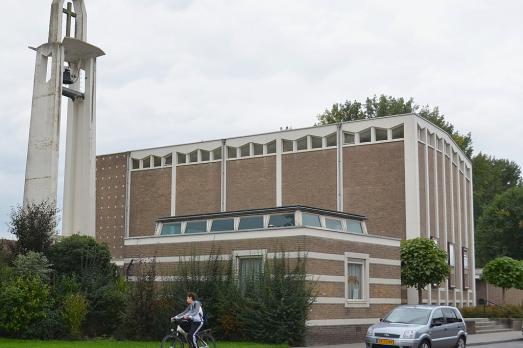Kruiskerk
Meppel, NL
Architecturally interesting reconstruction church, because of the centralizing floor plan in the form of an irregular octagon. Remarkably late work in the oeuvre of BW Plooij. Built as the second Reformed Church of Meppel, after the older Reformed Church on the Groenmarkstraat, which was then called the "Oude Kerk". In 1994 it fell out of use as a Reformed Church ("Synodal") and was sold to the Reformed Church Liberated. This church gave the building the name Kruiskerk. This church is listed as a Municipal Monument of the Netherlands.






